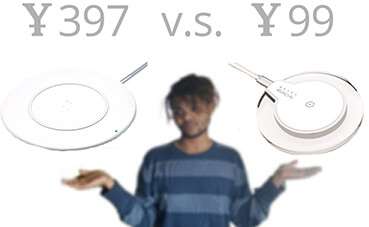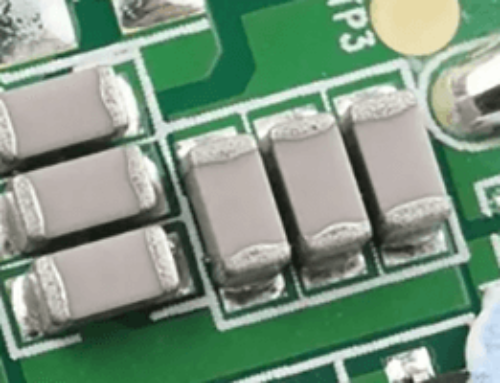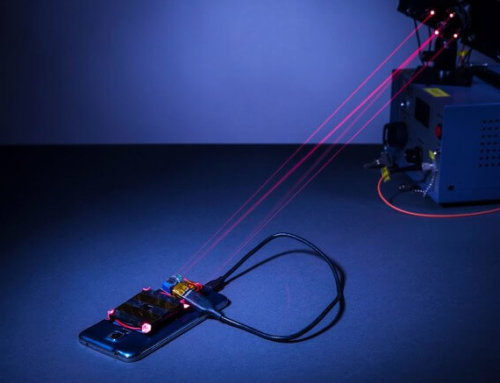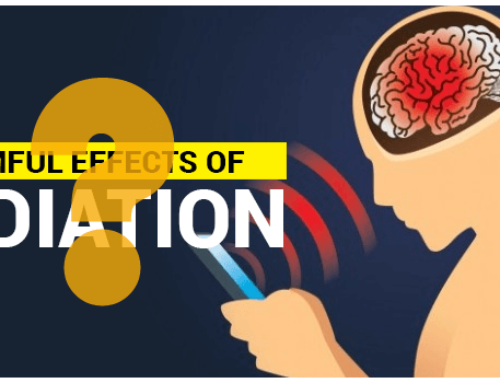The price of wireless chargers on the market is quite different. From RMB50 to RMB600 yuan. Up to ten times the difference. What is the difference in the user experience? We prepared four wireless charging pads. And use the Samsung Galaxy S9+ and Apple iPhone 8 Plus for testing the wireless charger. Look into the different charging rates of wireless chargers at different prices.
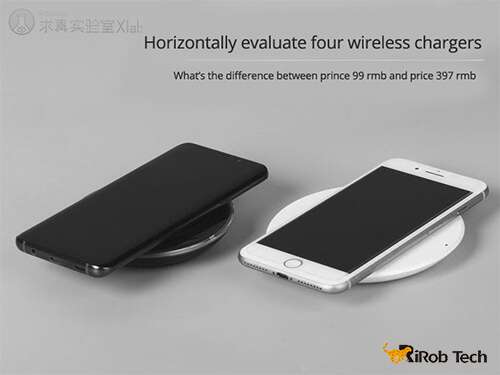
Brief introduction of four wireless chargers
We choose these four wireless chargers for horizontal evaluation. They are Belkin Boost Up (for iPhone), Samsung EP-PN920, Xiaomi MIX2s, and Nanfu cool Bo AirCharge.
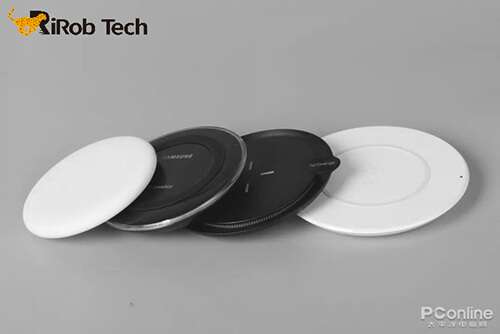
The four wireless chargers have the following parameters:
| Belkin Boost Up (for iPhone) | Samsung EP-PN920 | Xiaomi Wireless Charger | Nanfu AirCharge | |
| Input | 15V/1.5A | 5V/2A 9V/1.67A | 5V/2A 9V/2A | 5V/2A 9V/1.8A |
| Output | 7.5W(MAX) | 10W(MAX) | 9W(MAX) | 10W(MAX) |
| Standard | QI | QI | QI | QI |
| FOD | Support | Support | Support | Support |
| Plug | With adapter | Micro USB | USB Type-C | Micro USB |
| Adapter | With adapter | Without adapter | Without adapter | Without adapter |
| Built-in cooling fan | No | Yes | No | No |
| Price(RMB) | 397.00 | 198.00 | 99.00 | 99.00 |
Except for Belkin, the parameters of the other three wireless chargers are similar. Pay attention that the Belkin Boost Up wireless charger’s iPhone version. It supports the iPhone 7.5W wireless fast charging. The Xiaomi wireless charger supports the MIX2S 7.5W wireless fast charging. The Xiaomi official parameter indicates that the actual maximum output power is up to 9W.
The researchers found that on the market the compatibility is different from each wireless chargers although most of them are nearly the same output power. As officially recommended, using their own wireless chargers for their mobile phones. It tends to be better than using other wireless charging pad. The charging power will be higher and the charging speed will be faster. It also means the Samsung Galaxy S9+ and iPhone 8 Plus will charge faster when uses their own or recommended wireless charger. Is it true? We can’t make the conclusion before the actual test. Researchers used iPhone 8 Plus and Samsung Galaxy S9+ this time. The charging condition was changed from “20% charge for 30 minutes” to “from 0% charge to full”. Let’s looking for which wireless charger is more powerful.
Charge test condition description
We mentioned that the power will be charged from 0% to 100%. The power will be run out to the natural shutdown of the phone. Cooling down the mobile phone for several minutes. Then the wireless charging testing started. During the charging, every phone will insert SIM cards, shut down the screen, keep WiFi in, and other normal functions. The voltage, current, and power were recorded in every 5 minutes.
Especially, the Belkin Boost Up wireless charger’s adapter is their own. So a miniature power monitor had to be used to directly record its input power. The remaining three wireless chargers’ plug is Micro USB or USB Type-C. So a Power Z USB tester was used to get the output power of the adapter. The XIAOMI MDY-08-ES is used to supply power to the wireless chargers.
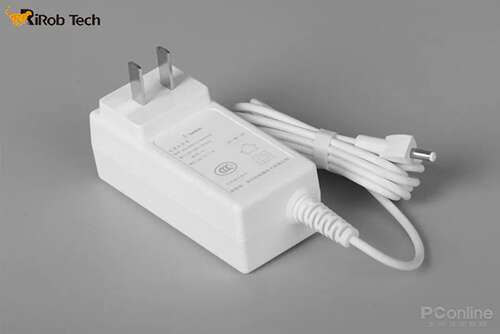
The adapter of Belkin Boost Up
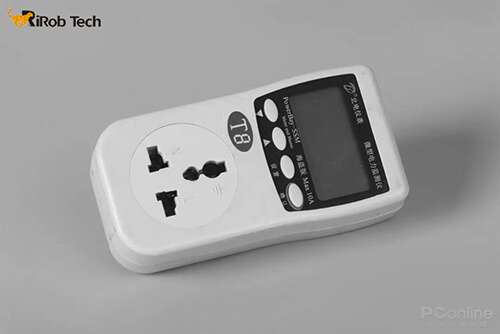
miniature power monitor
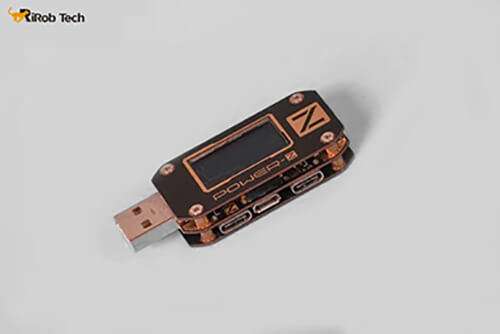
Power Z USB tester
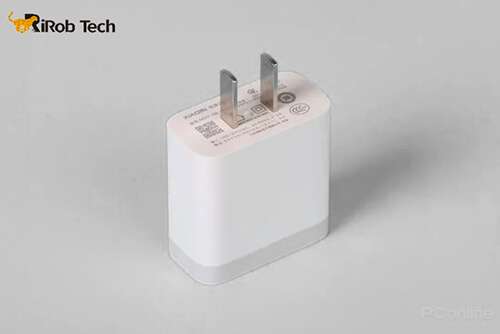
XIAOMI MDY-08-ES
PS: Since the Belkin Boost Up wireless charger directly detects the total input power, this data includes the portion consumed by the power adapter. So the data is about 0.5 to 1W higher than the other three wireless chargers’ recording.
Result & Analysis
About the recording. Since Samsung Galaxy S9+ has Lock Screen Notifications, the power volume displayed on the screen. The time of fully-charging for Galaxy S9+ can be accurate to 1 minute. However, iPhone 8 Plus need to light the screen to get the time. So the time of fully-charging for iPhone 8 Plus can only be accurate to 5 minutes. But 5 minutes is acceptable.
Graph of Samsung Galaxy S9+
Charging time Statistics (on Samsung Galaxy S9+)
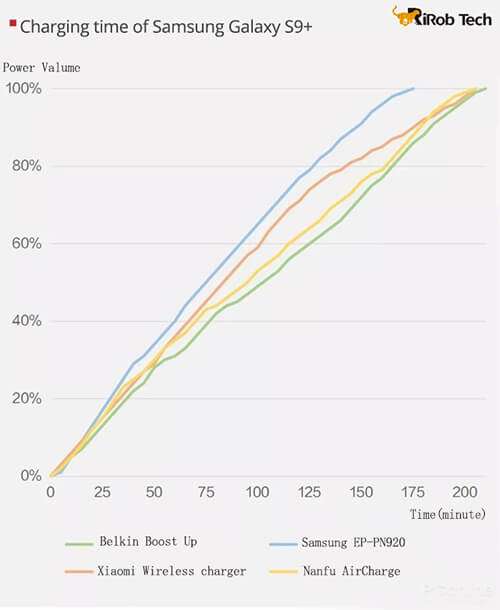
Charging time Statistics (on Samsung Galaxy S9+) | ||||
| Belkin Boost Up (for iPhone) | Samsung EP-PN920 | Xiaomi Wireless Charger | Nanfu AirCharge | |
0%~20% | About 35min | About 30min | About 35min | About 30min |
20%~80% | About 130min | About 95min | About 105min | About 130min |
80%~100% | About 42min | About 48min | About 64min | About 41min |
| Total time | About 207min | About 173min | About 204min | About 201min |
| The charging time of using Samsung EP-PEN920 is about 173 minutes. It is about 30 minutes fast than other three wireless chargers. It seems that the same brand wireless charger has a much fast charging than others do. | ||||
Power Statistics (on Samsung Galaxy S9+)
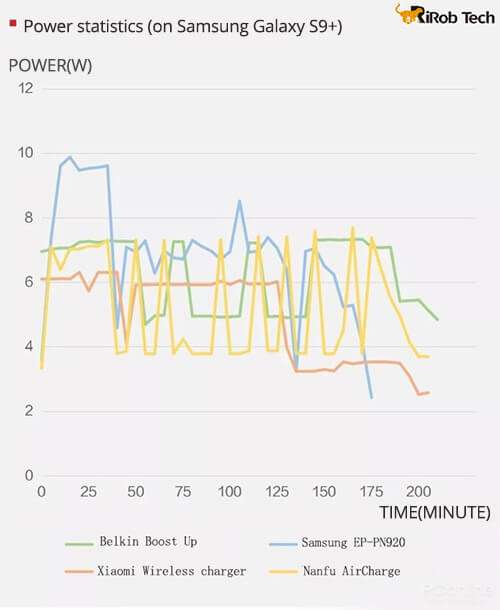
According to the charging power data, it is more efficient when using Samsung’s own wireless charger. The first 40 minutes of power is high enough and the peak close to 10W. But other wireless chargers’ peak power is only maintained at between 7 to 8W.
Graph of iPhone 8 Plus
Charging time Statistics (on iPhone 8 Plus)
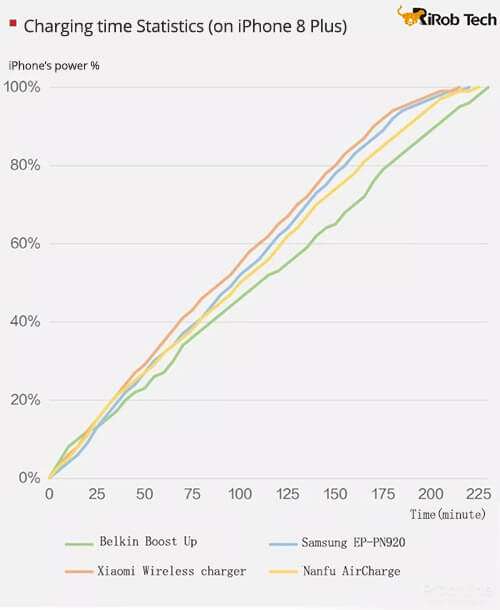
Charging time Statistics (on iPhone 8 Plus) | ||||
Belkin Boost Up (for iPhone) | Samsung EP-PN920 | Xiaomi Wireless Charger | Nanfu AirCharge | |
0%~20% | About 40min | About35min | About 35min | About 35min |
20%~80% | About 135min | About120min | About 115min | About 130min |
80%~100% | About 55min | About 65min | About 65min | About 60min |
| Total time | About 230min | About 220min | About 215min | About 225min |
| The four wireless chargers in the test have almost the same charging time. The maximum charge time is 230 minutes, the fastest is 215 minutes. The highest selling price of Belkin Boost Up wireless chargers is the longest. Why?Isn’t this an Apple certified wireless fast charge? | ||||
As a matter of fact, iOS 11.3 adjusted the iPhone’s wired and wireless charging rules. The fast-charged cable must use Apple’s PD fast charge cable. In other words, you have to use the official USB Type-C to Lightning cable for fast charging purpose. However, the wireless Fast charge was suspended. So it is Belkin’s solution to the mystery.
Power Statistics (on iPhone 8 Plus)
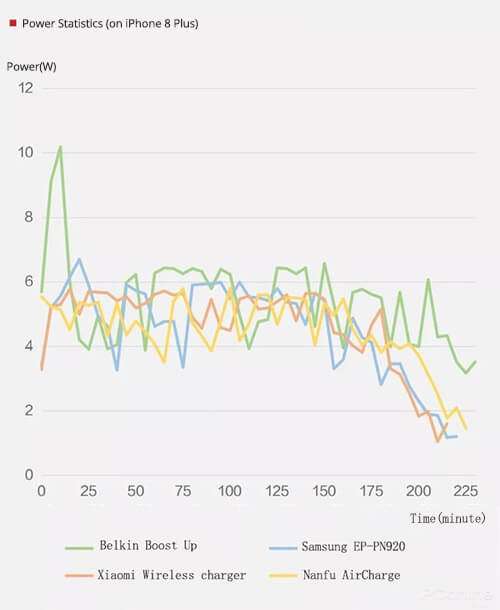
From the above figure, it can be seen that Belkin Boost Up seems to have a superior charge power. But what it counts is its total input power. In fact, the power consumed by the power adapter must also be deducted. Therefore, the calculated output power and other wireless chargers should be no different.
The researchers compared the iPhone 8 Plus on iOS 11.2 and iPhone X on iOS 11.3. Test their average power when they start charging from 20% of electricity for 1 hour. The result is that iPhone X is 6.76W, while iPhone 8 Plus is 5.87W. The test result shows that Apple further limited the charging power in the iOS 11.3 system.
Summary
Test conclusion:
- For the Samsung Galaxy S9+, the official original wireless charger is efficient than other brands.
- For the iPhone 8 Plus, since the iOS 11.3 system has adjusted the power of wireless fast charging, wireless chargers of various brands can be used in the short term, and there is not much difference with them.
Reminder: There are many lower prices wireless chargers in the market. It is recommended to purchase it carefully. If the low-priced product does not have the FOD(foreign object detection) function, if the metal item is inadvertently placed on the poor quality wireless charger, the metal may be rapidly heated. This may cause an accident.
How to reasonably choose wireless charging scheme and wireless charger chip? Click Here.
(DONE & Thanks: PcOnline.)

